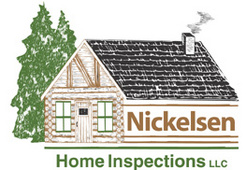
From my experience, the majority of roof leaks originate at one of the many penetrations through the roof line found on the vast majority of homes. Some of these penetrations include roof vents, dryer exhaust vents (on newer properties), satellite dish fasteners, and a host of other penetrations and connections to the roof.
Of these, a very common leak point is at the plumbing vents which penetrate the roof line. These plumbing vents, part of the plumbing system, have a "boot" or a "jack" (or a host of other commonly used names...) that acts as a sort of "shirt" around the base of the plumbing vent. The "necks" on these (the rubber part) has a tendency to start cracking, generally around 10/11 to 15 years. It would be rare for me to go to a home, for example, that has a 14 year old roof and find that the plumbing vent boots (the necks on them) in good condition.
Once these "necks" start to crack, the barrier between your roof and your attic space (if not the inside of the home itself) is compromised. Water from rain can begin to travel down the vent and into the attic, getting the insulation wet (at best), or leading to revealed leaks on the inside of the home itself. Snow creates a bigger problem, because the roof only needs a couple of inches to end up sitting on the vent boot above the crack, leading to more direct and intense leaking.
If you have a roof that is over 10 years old, you should carefully inspect the plumbing vent boots/jacks for such cracking. If you have them, we would recommend that you replace entirely the boot/jack.
While there are other acceptable repairs, one that is not acceptable, in our humble opinion, is caulking the  neck where it meets the plumbing vent pipe.
neck where it meets the plumbing vent pipe.
People often do things to homes without thinking about it... They don't think, for example, "if this neck was intended to be caulked and subsequently conneted to the pipe then it would have been installed that way." Indeed, there are good reasons why this area isn't caulked and of them the main reason is this: the neck is intended to expand and contract, allowing movement in the pipe and boot itself, which is a natural occurance in fluxuating weather throughout the year.
If you caulk this area, either at the point of installation, or as a "repair" for a cracked neck or leaking neck, then this expansion and contraction is impeded. The result is that the neck cracks more. This "repair", ironically, accellerates deterioration and results in more leaks.
My only exception to this would be if the roof is very near the end of its life design (say, an 18 year old roof that has a 20 year rating), and one is trying to get things to last for a bit longer until a full replacement is made. In that situation, then caulking (and continuing to caulk...) may be acceptable. But, for the vast majority of situations, the best thing to do is to just replace the boot/jack.

Comments(1)